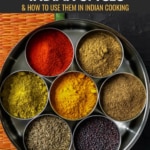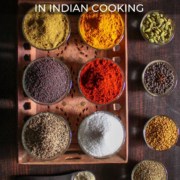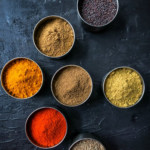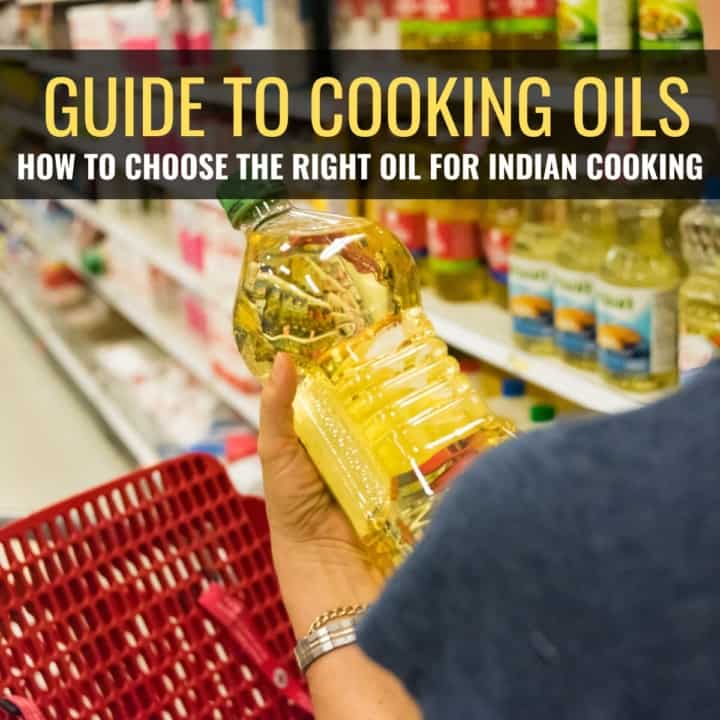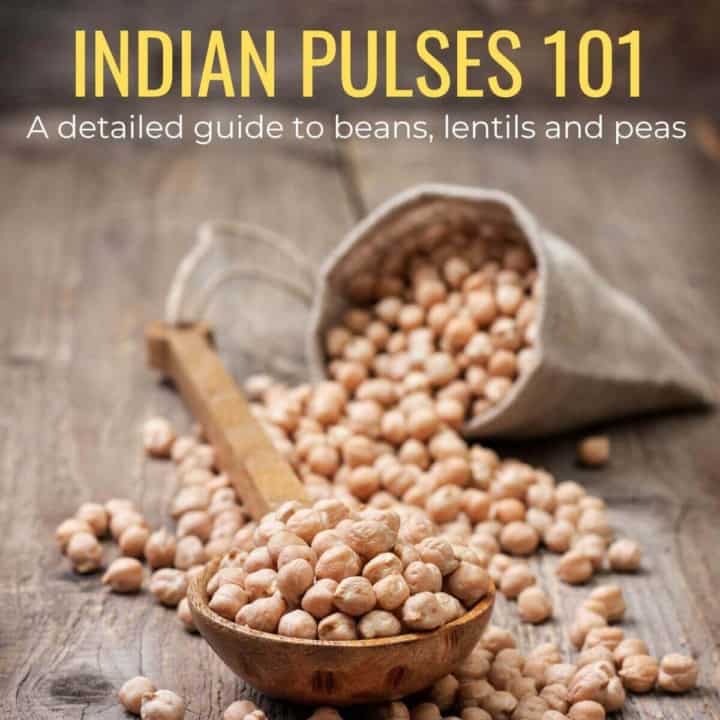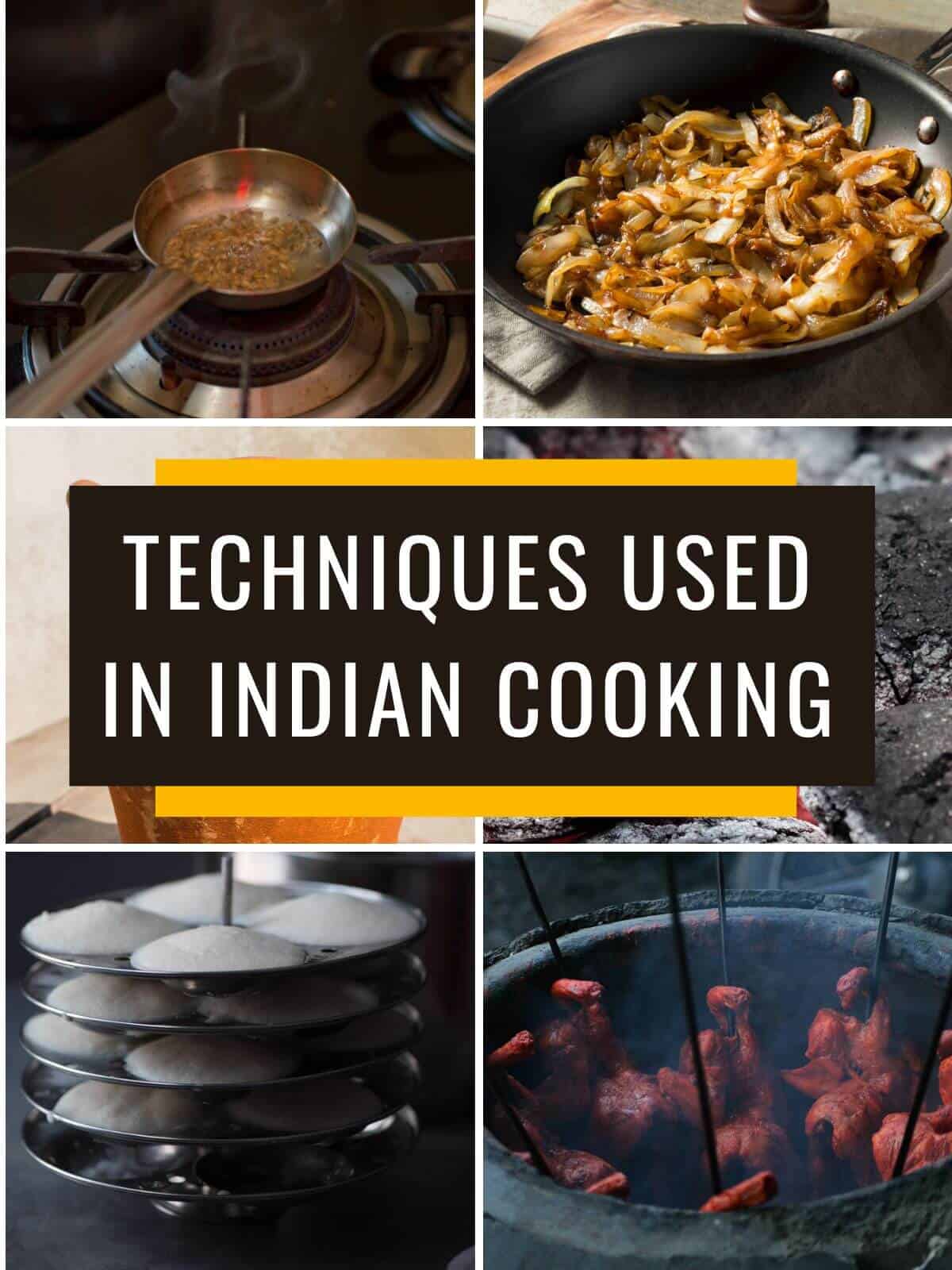Essential Spices in Indian cooking
Note: This post contains affiliate links. As an Amazon Associate I earn from qualifying purchases.
Unlock the world of Indian cuisine with just seven essential spices. Learn which spices to buy and how to use them to create delightful Indian dishes.
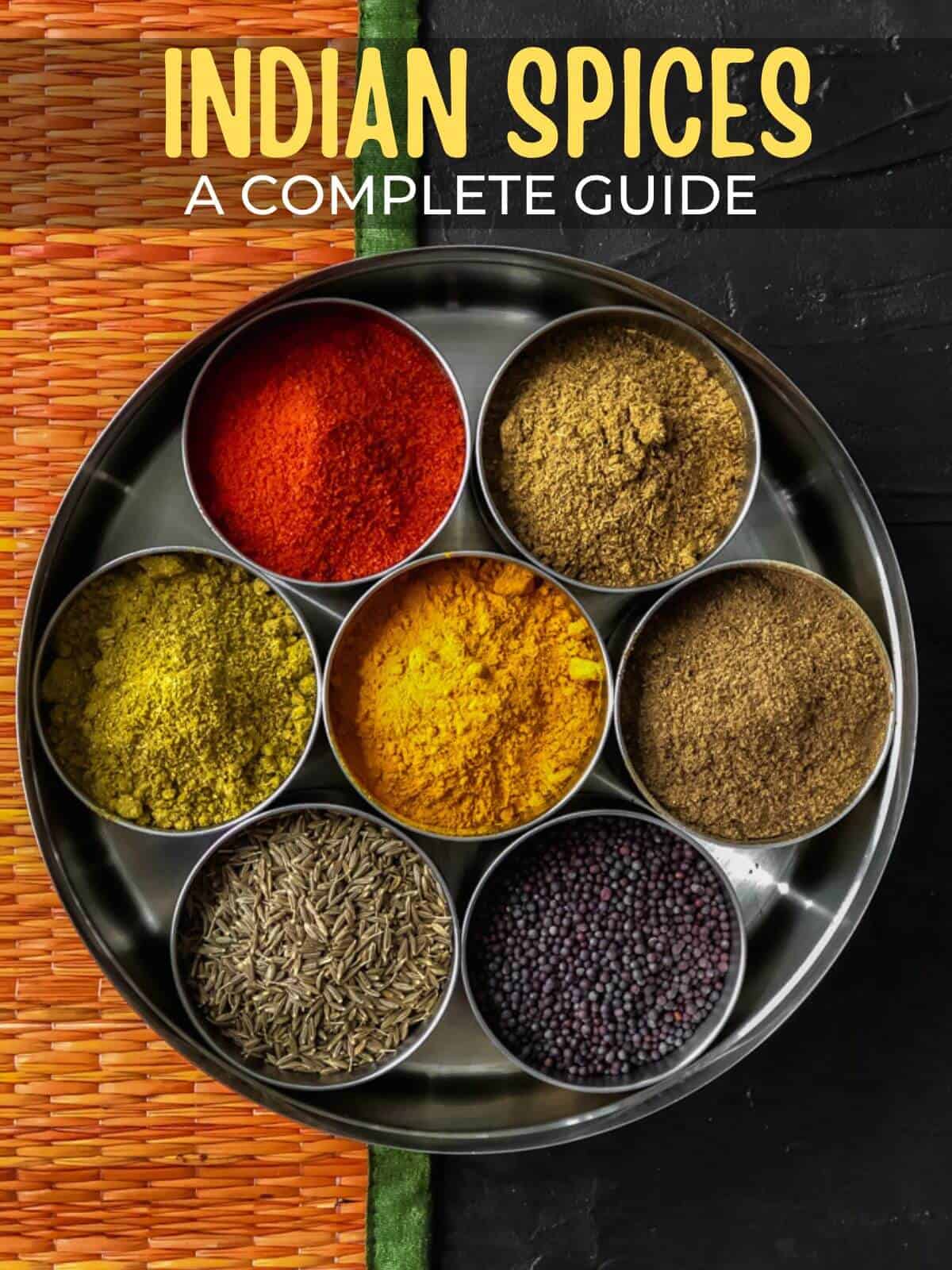
Welcome to the delightful world of Indian cuisine, a place where each spice brings its own magic to the table! Don’t worry; starting your home cooking adventure doesn’t mean you need a pantry full of spices. I’m here to guide you through a handpicked list of essential spices and blends that are used in many popular Indian dishes. Let’s get started!
7 Essential spices/spice blends used in Indian cooking
Cumin seeds, known for their unique earthy and aromatic taste with a hint of bitterness, add a nutty flavor to any dish. They’re a staple in tempering curries and vegetables, especially in North Indian cuisine, where many recipes begin with cumin seeds sizzled in hot oil, as seen in this jeera rice recipe. Dry roasted cumin seeds, ground into powder (bhuna jeera powder), are also popular as a flavorful garnish in raitas.
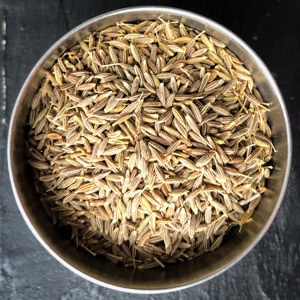
While there are three mustard varieties (black, white, and brown), the black one is most widely used in cooking. Most South Indians use mustard seeds for tempering instead of cumin seeds. In Eastern India, mustard seeds are crushed to a paste and added to curries to intensify their flavor.
Check out this Ven Pongal recipe (a south Indian rice-lentil porridge) that uses mustard seeds for tempering.
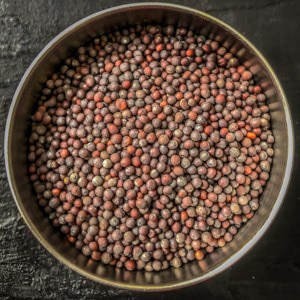
Roast whole cumin seeds and powder them in a spice grinder or buy ground cumin powder. Either way, cumin in both its forms – whole and powdered is a must-have spice in your kitchen pantry. It is used along with coriander powder to enhance the flavor of curries and dals.
Most North Indian curries call for this spice powder combination to be added once the onions and tomatoes are fried in oil. Use this spice powder to make this dal fry recipe.
While you can buy this spice powder from a store, here’s an easy recipe to make cumin/jeera powder at home.
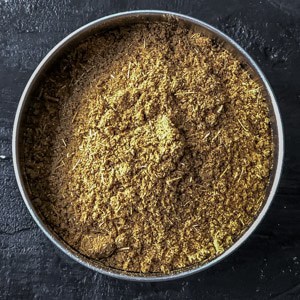
Coriander powder (dhania powder)
Coriander (the spice in powdered form and the herb) is used to season most curries, chutneys, and vegetable dishes. Coriander powder is usually added along with cumin powder in North Indian curries. You could do a 1:1 ratio or 1:2, using two teaspoons of coriander powder for every teaspoon of cumin powder.
It is super easy to make coriander powder at home, and here’s a quick recipe for you to try – Homemade coriander powder.
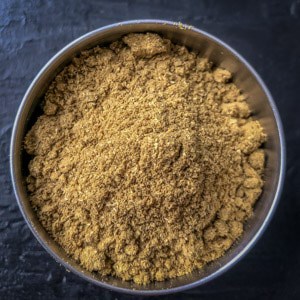
Chili powder is a must for most Indian meals and can liven up any meal when used in moderation. Chili powders can be of various varieties, but the two common forms are Kashmiri (mild and used to impart color) and cayenne (extremely hot).
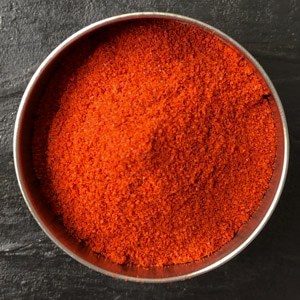
Turmeric, one of the key ingredients in Indian cuisine, is used in most preparations of vegetables and dals/lentils (except greens) to enrich the curries with its fragrance and yellow color. This versatile spice is also known for its medicinal properties and is often used as an antiseptic for minor cuts and burns.
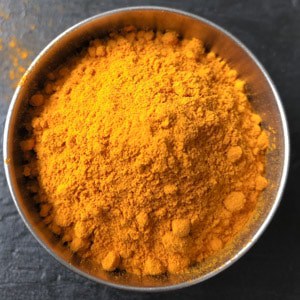
A popular spice blend in Indian cooking, garam masala is commonly used in biryanis and north Indian dishes to add warmth. You can make it at home or get storebought. It is mostly added as a garnish after the cooking process is complete. There are exceptions, though, like this shrimp biryani, where the spice is added during cooking.
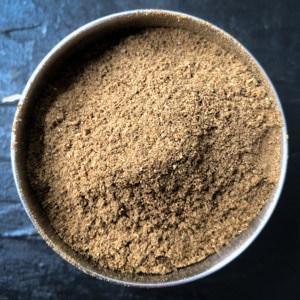
Important tips about spices
- Spices in their powdered form start to lose flavor in a few months. Buy whole spices and grind them as needed using a spice grinder or a powerful high-performance blender like Blendtec or Vitamix.
- Homemade powders are more potent than store-bought ones, so use sparingly.
- Store the spice/spice powders in airtight containers away from direct light and heat in a cool, dry place.
- Most Indians store their essential spices in what we call masala dabba meaning spice box. Here’s a pic of my spice box – and you can find a similar spice box on Amazon.
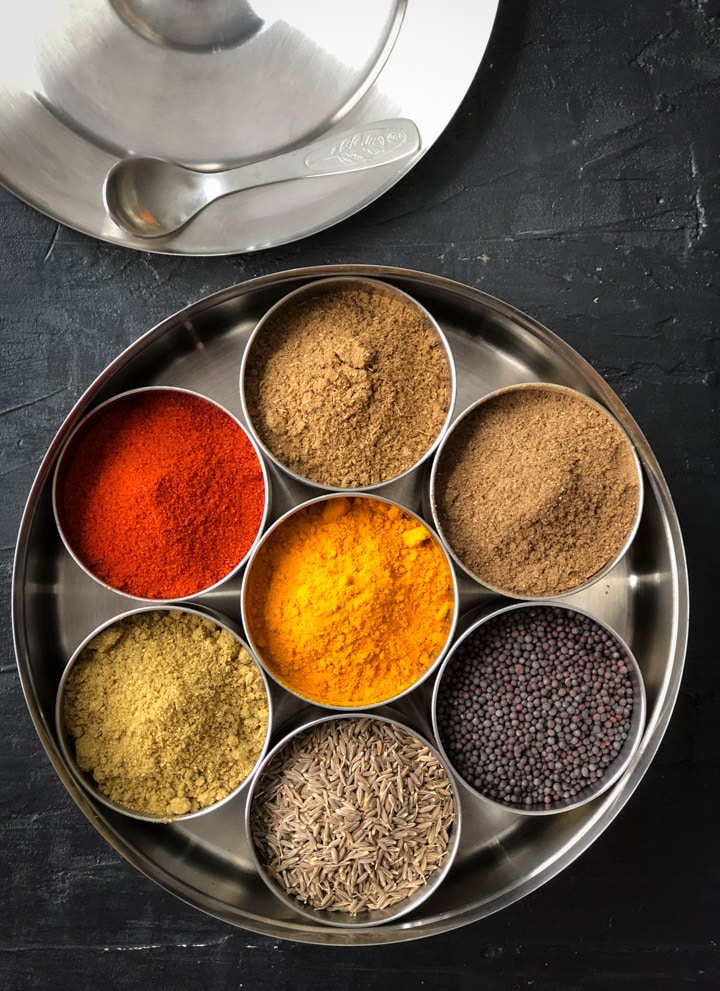
5 easy recipes that you can make with basic Indian spices
- Lemon Rice – a popular and flavorful South Indian dish that you can make in less than 15 minutes.
- Dal fry – This restaurant-style dal fry comes alive with a tempering of cumin seeds in ghee and pairs well with jeera rice.
- Tadka Dal – A one-pot simple dal recipe – perfect for those who are new to Indian cooking
- Cabbage Palya– cabbage cooked South Indian style – requires minimal spices.
- Bean poriyal – A simple beans side dish made south Indian style with very few spices
Additional spices/condiments found in the Indian pantry
If you enjoy making homemade spice blends, take a look at this list of additional spices. Remember, there’s no need to rush – you don’t need every spice listed to begin your Indian cooking journey. Consider these spices once you’re comfortable with the basics and ready to elevate your home-cooked Indian meals to the next level.
Asafoetida (Hing) – It is a resin popularly used in its powdered form to flavor curries. It is often used in lentil dishes to avoid flatulence. Hing is usually introduced in the dish during the tempering process. It is mostly used in South Indian and Western cooking. Jains (who don’t eat onions and garlic) often use asafoetida as a substitute due to its strong flavor. Tip – use it sparingly.
Whole dried chilies – The few commonly found varieties of dried whole chilies are Kashmiri, Boriya, Byadgi (these are the ones I stock at home). Kashmiri and Byadgi chilies are mild chilies, and they are known for their deep red color. They are mostly used in tempering. Boriya is medium spicy and is ground to make chili flakes (commonly known as paprika). Byadgi and boriya chilies are especially popular in south Indian homes and are used to temper sambar and rasam.
Black peppercorns – Whole black peppercorns are used to give the dish an instant lift, making it popular with most cuisines in the world. Peppercorns and the next six ingredients are the essential spices commonly used to make biryanis. They are added to hot oil to unlock their flavors as part of the tempering process.
Cloves – Whole cloves, considered rich in flavor, are added to biryanis or curries for their aroma.
Cinnamon sticks (Dalchini) – Available in sticks as well as in powder form. The sticks are used in curries and biryanis, and the powdered form is used in sweets and baked goods. Look for the Ceylon cinnamon (it is more expensive than cassia and flavorful).
Bay leaves – They have a sweet, woody aroma and slightly pungent flavor. They are added more for the fragrance than the flavor.
Black cardamom – An essential ingredient in garam masala, with its sweet and nutty aroma, black cardamom adds a nice flavor to biryanis.
Green cardamom – This extremely aromatic and versatile spice is used in sweets like Shrikhand and Kalakand. It also makes its way into our daily tea and even biryanis.
Carom seeds (Ajwain) – When crushed, carom seeds give a strong and distinctive fragrance that enhances the dish’s aroma and flavor. We love adding it to parathas, theplas, and even curries like this dum aloo.
Fenugreek seeds – From tempering dals to making sweets, fenugreek seeds are widely used in South Indian dishes.
Coriander seeds – Just like cumin seeds, they are available in whole as well as in powdered form. Dry roast them and grind them to make a fragrant mix right at home. It is a key ingredient in many spice mixes, such as garam masala, Kundapur masala, and Sambar powder.
Black salt – A pungent-smelling condiment that is actually more pink than black in color. This high sulfur content salt is added to any street food or raitas to perk it up.
Dried methi leaves (Kasoori methi) – Fresh fenugreek leaves are sun-dried to make kasoori methi. These aromatic leaves make for perfect garnishes in butter chicken or paneer makhani. I love to dry roast them for 30 seconds or so before adding them as a garnish.
Dried Mango powder (Amchur powder) – Amchur is made from sun-dried raw, green mangoes. They are used very much like limes to add tang to any dish. If you are running out of channa masala powder, a tiny bit of amchur makes for a good substitute. Use it in this chana masala recipe.
Fennel seeds – The seeds have a warm, sweet, and intense flavor when used whole or powdered. They are used in baked goods, desserts as well as to add a zing to roasted veggies.
Saffron (Kesar) – It is often used to color the rice in the biryanis or as a garnish in desserts. It has a strong, intense aroma, so when it comes to saffron, less is more.
Sesame seeds – These black or white colored seeds are known for their warmth, and that’s why it makes their way in laddoos and chikkis.
Poppy seeds(khus-khus) – They have a distinct nutty aroma and are used to add texture to dishes, be it flatbreads or curries.
Whole nutmeg or nutmeg powder – Nutmeg powder is sweet, aromatic, and often used in both sweet and savory dishes.
Pomegranate seeds – It is used to add tang to chutneys and curries.
This is the other spice box I have to store the additional spices that I use for biryanis and other curries. This masala box is available on Amazon as well.
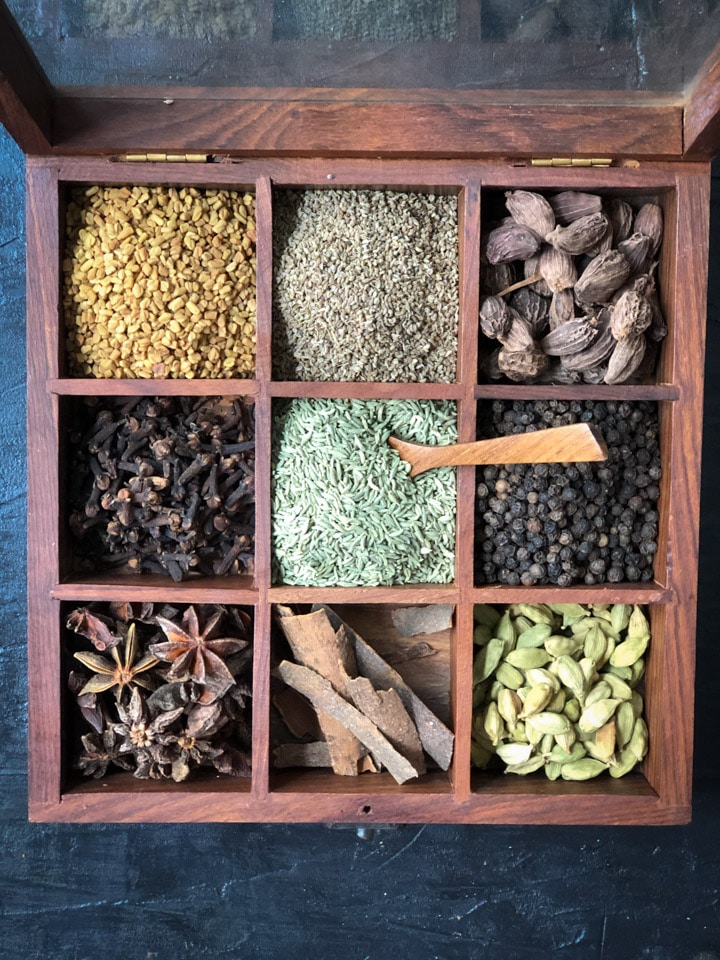
Store-bought spice mix for specialty dishes
- Chole/Channa Masala – Use this spice mix to make this chickpea curry – channa masala or chole.
- Pav bhaji Masala – Adds flavor to this veggie-loaded street food recipe (Pav bhaji).
- Sambar powder – This spice mix is an essential component of this lentil-vegetable stew called Sambar.
- Rasam powder – To make lentil-based soups like this Rasam recipe.
How to use spices in Indian cooking?
This is the process most Indians follow when cooking with spices. The sequence may sometimes vary depending on the dish, and there will be variations from one household to the other.
- Start with heating oil over medium heat.
- Once the oil is hot, add whole spices such as mustard and/or cumin seeds first (along with asafoetida). This is called the tempering process. If you are using other whole spices along with mustard/cumin seeds, wait until these spices have started to sputter (in the case of mustard seeds) or sizzle (in the case of cumin seeds). The reason is mustard/cumin seeds take the longest to cook, and you don’t want your other spices/dals (whole chilies, fenugreek seeds, urad dal, whole cloves, peppercorns, bay leaves, curry leaves, etc.) to get burnt.
- Add onions along with ginger/garlic paste/green chilies if using. Fry till the onions have softened and turned translucent.
- Add spice powders (cumin powder, coriander powder, turmeric powder, chili powder) and salt. Fry them for about 30 seconds.
- Add tomatoes. Fry them until they turn soft and mushy and oil leaves the sides. (Note – Sometimes I add the spice powders and tomatoes together).
- Add meat or vegetables.
- Add garam masala and/or lime juice at the end once the cooking is complete. Mix well.
- Garnish with finely chopped cilantro.
Where to buy spices for Indian cooking
To be able to make authentic-tasting Indian food, it is important that the spices in your pantry have been sourced from India by your retailer.
I prefer buying spices and spice mixes from local Indian stores such as Patel brothers. They have 52 locations in the US, and it may be easier and cheaper to get your spices from them. If an Indian store isn’t accessible, you can find most of these spices on Amazon.
Preferred brands – Laxmi is the brand that I rely on for whole spices and for spice mixes – Everest and MDH are good options.
Here’s a link to all the essential Indian spices on Amazon for an easy buying experience.
How to store spices
Store the spice/ spice powders in airtight containers away from direct light and heat in a cool, dry place. Whole spices maintain quality for about a year. Ground spices gradually lose potency and should be used within about 6 months.
Indian Cooking 101
Learn more about Indian cuisine and get cooking in no time! Check out these helpful resources from the Indian Cooking 101 series.
This post was originally published on 05/31/2019, and the text and images were updated on Nov 10, 2023.

